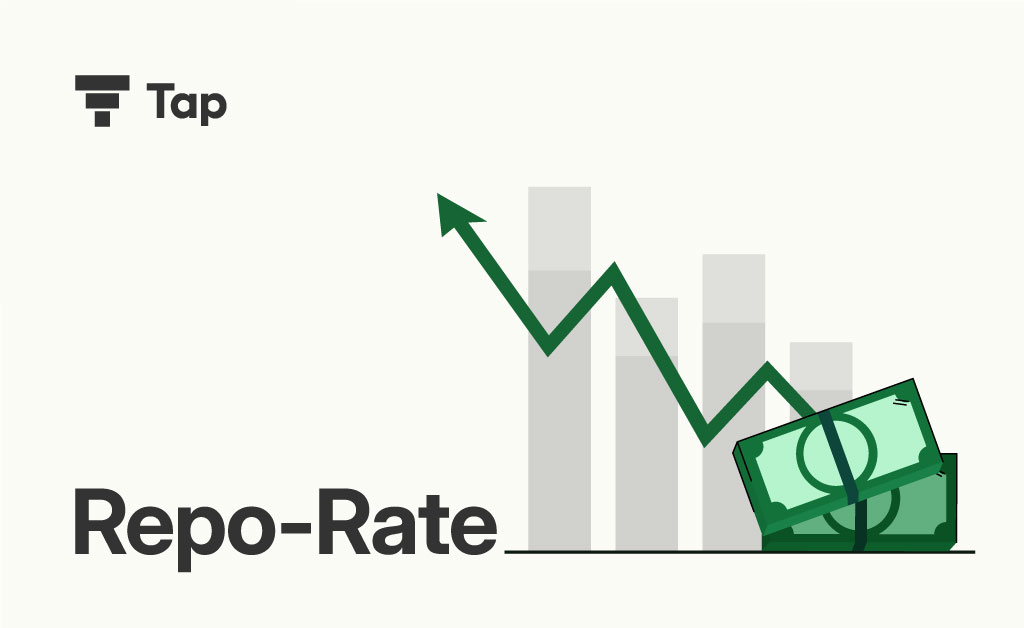What is Repo Rate? Understanding RBI’s Key Rate Today

Introduction:
The repo rate is a critical financial instrument used by central banks to control the money supply, inflation, and economic stability. This article explores the repo rate, its meaning, the current rate, and the implications for the economy and individuals.
What is Repo Rate?
The repo rate is the rate at which the Reserve Bank of India (RBI) lends short-term money to commercial banks. It stands for ‘Repurchase Option,’ where banks sell government securities to the RBI with an agreement to repurchase them at a future date at a predetermined price. This process helps regulate liquidity and control inflation.
Components of Repo Rate
- Interest Rate: The percentage at which the RBI lends to commercial banks.
- Collateral: Government securities that banks provide as collateral for borrowing funds.
- Repurchase Agreement: The contract specifying the terms of the repurchase, including the date and price.
Repo Rate Meaning: Detailed Explanation
The repo rate meaning involves understanding its role in the financial system. It is a tool for managing liquidity and inflation. By adjusting the repo rate, the RBI influences borrowing costs, consumer spending, and economic growth.
Reverse Repo Rate
The reverse repo rate is the rate at which the RBI borrows money from commercial banks. It is a mechanism to absorb excess liquidity from the banking system, thus controlling money supply and inflation.
Repo Rate Today
As of today, the repo rate is set by the RBI and is subject to change based on economic conditions. The current rate can be checked on the RBI’s official website or financial news platforms.
RBI Repo Rate
The RBI repo rate is a crucial aspect of the RBI’s monetary policy. It influences interest rates for loans and deposits, impacting everything from personal loans to mortgages and savings accounts.
What is Repo Rate’s Impact on the Economy?
- Inflation Control: By increasing the repo rate, the RBI makes borrowing more expensive, reducing consumer spending and controlling inflation.
- Economic Growth: Lowering the repo rate encourages borrowing and investment, stimulating economic growth.
- Loan and Deposit Rates: Changes in the repo rate affect interest rates on loans and deposits, influencing consumer and business financial decisions.
Reverse Repo Rate Today
The reverse repo rate today complements the repo rate, helping manage liquidity. It is typically lower than the repo rate to incentivize banks to lend more rather than park funds with the RBI.
RBI Monetary Policy Repo Rate
The RBI uses the repo rate as part of its monetary policy to achieve macroeconomic objectives such as controlling inflation, managing liquidity, and ensuring financial stability. Regular reviews and adjustments of the repo rate help address economic challenges.
Importance of Repo Rate
- Inflation Management: Helps keep inflation within targeted limits.
- Liquidity Control: Ensures adequate liquidity in the banking system.
- Economic Stability: Promotes balanced economic growth.
How to Stay Updated with Repo Rate Changes
- RBI Announcements: Regularly check updates from the RBI.
- Financial News: Follow reliable financial news platforms for the latest updates.
- Bank Notifications: Banks often notify customers of changes in loan and deposit rates linked to the repo rate.
Frequently Asked Questions (FAQs)
Q: What is the repo rate?
A: The repo rate is the rate at which the RBI lends money to commercial banks against government securities.
Q: How does the repo rate affect loans?
A: Changes in the repo rate influence interest rates on loans. A higher repo rate increases borrowing costs, while a lower rate reduces them.
Q: What is the current repo rate today?
A: The current repo rate can be found on the RBI’s official website or financial news platforms.
Q: What is the difference between repo rate and reverse repo rate?
A: The repo rate is the rate at which the RBI lends to banks, while the reverse repo rate is the rate at which the RBI borrows from banks.
Q: Why is the repo rate important?
A: The repo rate is crucial for controlling inflation, managing liquidity, and ensuring economic stability.
Conclusion:
Understanding the repo rate and its implications is essential for both individuals and businesses. It plays a significant role in the economy, influencing everything from inflation to loan interest rates. Stay informed about repo rate changes to make better financial decisions.
For expert advice on how repo rate changes impact your finances, fixed income investments, visit TapInvest. Our advisors provide personalized guidance to help you navigate economic fluctuations with confidence.
